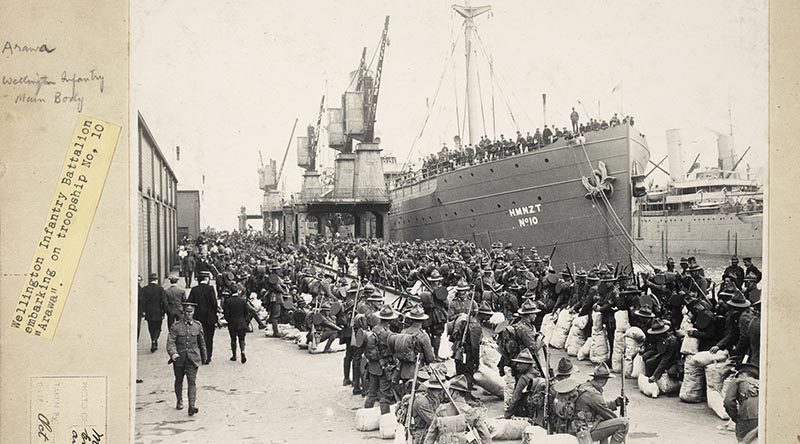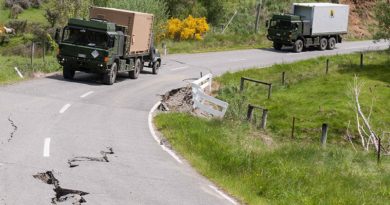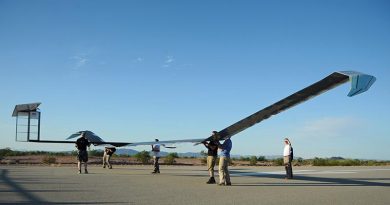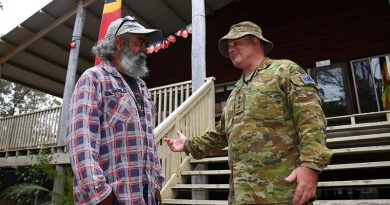NZ officially doubles Kiwi headcount for Gallipoli
Share the post "NZ officially doubles Kiwi headcount for Gallipoli"

Two New Zealand Defence Force (NZDF) historians have published an e-book confirming that the number of New Zealand soldiers who served at Gallipoli in 1915 was more than 16,000 – almost double the accepted number of 8556.
CAPTION: The Wellington Infantry Battalion preparing to board a troopship in October 1914. Few survived Gallipoli unscathed. By late September 1915 the battalion had experienced an attrition rate of more than 170 per cent. Alexander Turnbull Library, PA1-f-022-6-1
The book builds on previous research carried out in 2016, which was widely reported at the time.
Phenomenal and Wicked: Attrition and Reinforcement in the New Zealand Expeditionary Force at Gallipoli, by Defence Force Historian John Crawford and Senior Advisor Heritage Matthew Buck, is the culmination of five years of research.
The research was highlighted in 2016, when Mr Crawford discovered the notebooks of the Deputy Assistant Adjutant General of the New Zealand and Australian Division in Archives New Zealand.
The book also provided insight into the planning undertaken prior to the main body of soldiers leaving New Zealand in 1914, Mr Crawford said.
“New Zealand’s political and military leadership were well aware that losses in a major war were likely to be extremely heavy,” he said.
“However, their extensive preparations were almost overwhelmed by the scale of the losses that were actually experienced – more than 2,700 killed and many thousands more becoming sick and wounded.”
By late September 1915 the infantry had typically suffered about 170 per cent attrition, of which about half were caused by a dysentery epidemic that raged through the Allied forces on the peninsula.
“This very high attrition rate seems to have been common to all the Allied contingents fighting at Gallipoli,” Mr Crawford said. “The infantry battalions in the New Zealand and Australian Division were losing about 30 per cent of their strength every month, which was double the attrition rate of the British infantry on the Western Front.”
Another key to the research was the more recent discovery of financial records that show exactly how the New Zealand forces were distributed over the course of the campaign.
“The financial records confirm that relatively few of the thousands of men who became sick or wounded at Gallipoli returned to their units during the campaign,” Mr Crawford said. “The only way that the New Zealand Expeditionary Force could stay in the battle was by pouring in thousands of fresh reinforcements.
“We now know that up to 17,000 New Zealand Expeditionary Force personnel had a direct connection with the campaign. Twice as many New Zealand families as previously thought had at least one member on the peninsula in 1915.
“We think that this goes a very long way towards explaining why Gallipoli had such a profound effect on contemporary New Zealand society, and why it continues to have such a central place in our national memory.”
The book is the result of cooperation between the Ministry for Culture and Heritage, the NZDF, Archives New Zealand and Statistics New Zealand. Mr Crawford and My Buck followed a research trail from Archives New Zealand to the Australian War Memorial in Canberra to piece together a story that corrects faulty assumptions that for decades distorted how we saw our nation’s involvement at Gallipoli.
Partly for their work in establishing the new numbers, in 2019 Mr Buck received a Chief of Defence Force Commendation and Mr Crawford received the Defence Meritorious Service Medal.
The book is available free at:
https://nzhistory.govt.nz/war/gallipoli-campaign-numbers
MORE INFORMATION:
How many New Zealand soldiers served at Gallipoli?
The new research confirms the 2016 estimate that up to 17,000 New Zealand Expeditionary Force personnel served at Gallipoli.
What was the Gallipoli campaign?
The Gallipoli campaign, which was fought on land from 25 April, 1915, to 9 January, 1916, was a major Allied offensive against the Ottoman Empire during the First World War. It was a defeat for the Allied cause.
How does this research affect medallic recognition or war memorials?
The new total does not affect individual medallic entitlement, the National Roll of Honour or listings on war memorials. Individuals who served at Gallipoli have generally already received medallic recognition. However, if descendants wish to investigate further, they should research their ancestor’s service records on www.archway.archives.govt.nz, then, if still in doubt, contact the New Zealand Defence Force’s Personnel Archives and Medals Office
The total number of deaths remains the same at 2,779.
How was the original total of 8,556 reached?
In his preface to Major Fred Waite’s 1919 official history, The New Zealanders at Gallipoli, General Sir Ian Hamilton wrote that a total of 8556 soldiers of the New Zealand Expeditionary Force landed on the Gallipoli Peninsula.
Few at the time questioned the figure of 8556, even though the total number of New Zealanders available for service at Gallipoli was much higher. Hamilton seems to have been referring only to the strength of the units when they landed, rather than the total number of men who would go on to serve in these units.
Later in the book, Waite made it clear that this number did not include the reinforcements that were sent later to the peninsula.
When was this figure questioned?
Since the early 1980s historians have questioned this figure and how it was calculated. However, producing a more definitive estimate was made difficult because of the fragmentary nature and relative inaccessibility of many of the known sources.
The digitisation of First World War military service files by Archives New Zealand in 2014 has dramatically increased the number of records that can be accessed easily to address this question. However, military service files cannot provide the whole answer. There are still significant gaps in these records and the new total is a conservative estimate, based on service records and newly discovered sources.
How many reinforcement units went to Gallipoli?
A total of six reinforcement contingents embarked from New Zealand for service overseas and arrived in the Middle East in time to serve during the Gallipoli campaign.
How many sick or wounded returned to Gallipoli after recuperation?
The total number of sick or wounded who were evacuated and then returned to the Gallipoli Peninsula during the Gallipoli campaign (25 April to 20 December 1915) is not known precisely. However, it is certain that they were greatly outnumbered by new reinforcements arriving from New Zealand via Egypt.
For example, the number of returning sick and wounded between June and August 1915 was 1,318, whereas the number of new reinforcements over that same period was 4,437. By late September, less than a quarter of those who were evacuated sick or wounded had returned to their units.
.
.
.
.
.
.

.
.
Share the post "NZ officially doubles Kiwi headcount for Gallipoli"





